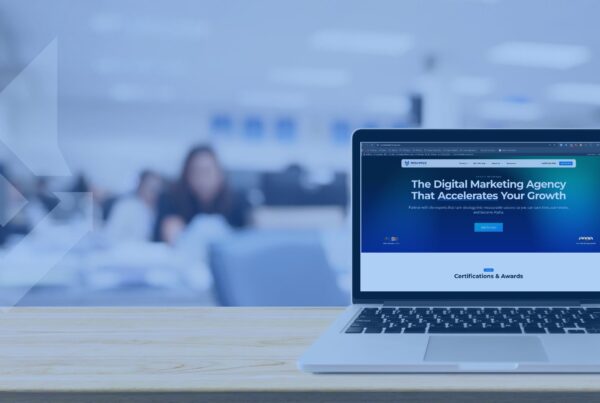Last updated on October 31st, 2025 at 12:23 pm
The digital world is noisy. Every day, you are told to be on TikTok, run Google Ads, post on Facebook, and start a newsletter. It feels like you need to be everywhere at once, but that’s a direct path to a drained bank account and disappointing results.
If you’re wondering where to advertise your business, you’re already asking the right question. This guide is not just another list of platforms. It’s a strategic framework to help you choose where to invest your time and money for real, measurable growth. We’ll help you move from guessing to growing. Before we explore the “where,” let’s start with the “who” and the “why.”
3 Questions to Answer Before You Spend a Dime
Great advertising isn’t about shouting into the void; it’s about starting a conversation with the right people. Answering these three simple questions first will make every dollar you spend more effective. They form the foundation of a smart strategy, making the question of where to advertise your business much easier to answer.
1) Who is Your Ideal Customer?
You cannot find your customers if you don’t know who you’re looking for. The best way to do this is by creating a customer persona. While many people use the term “buyer persona,” it’s helpful to know the different types of personas businesses use, so you can focus on the one that matters most for advertising.
The Four Main Persona Types:
- The Proto-Persona: This is your starting point! An idealized version of your target customer based on your initial assumptions and market research. It’s your educated guess about who needs your product, helping you understand what your target customers might want and need.
- The Customer Persona: This is a more realistic profile based on data from your actual, current customers. It includes real demographics, behaviors, and feedback, and is invaluable for improving retention and finding similar audiences.
- The User Persona: This is a fictional character representing a typical user of your product, which is especially important when the user is different from the buyer (e.g., an employee uses software that their manager purchased). This persona helps you understand how people interact with what you sell.
- The Buyer Persona: This is the most critical persona for your advertising strategy. It’s a fictional character representing your ideal purchaser, which is the person who has the problem you solve and the authority to buy your solution. This persona helps you understand the needs, wants, and motivations of the people you need to reach with your marketing.
For the purpose of choosing where to advertise, we will focus on building your buyer persona. Give them a name. What’s their job? What are their biggest challenges? Where do they look for information? For example, “Landscaper Larry,” a 45-year-old business owner, spends his time on different sites than “Boutique Betty,” a 28-year-old looking for unique fashion. Defining your audience is the essential first step.
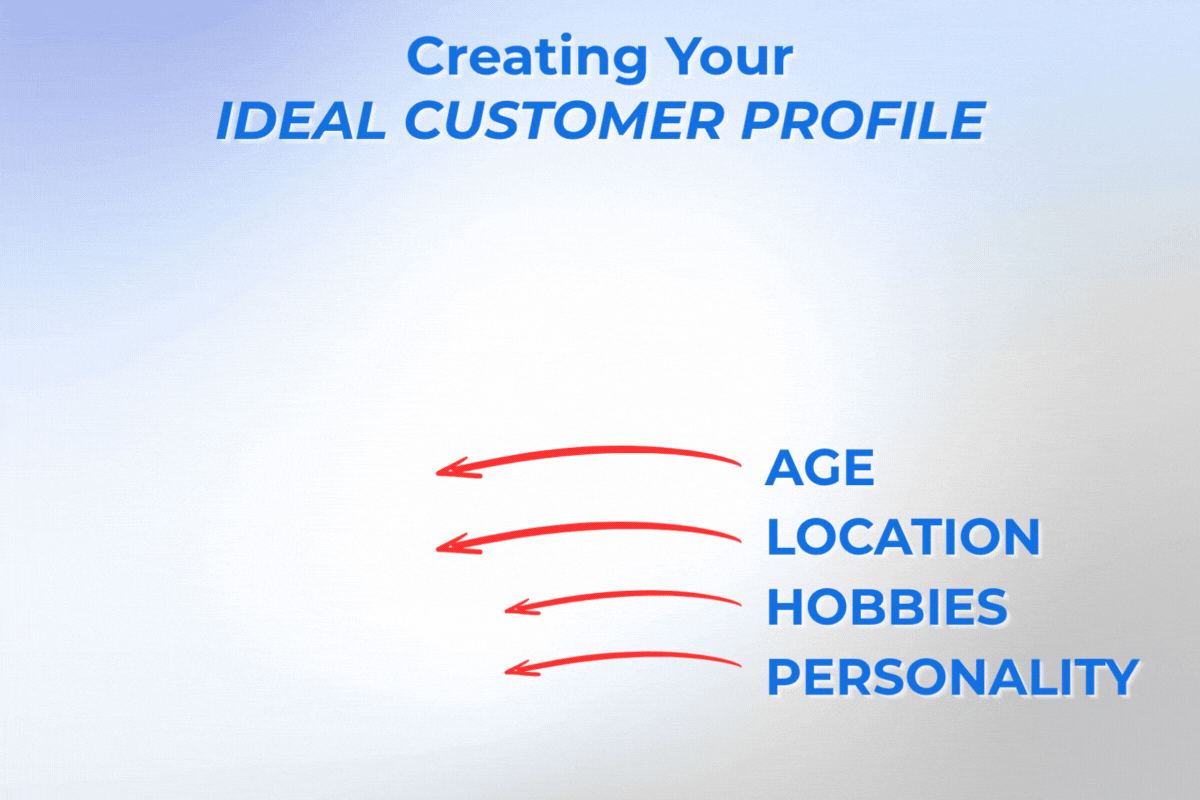
2) What is Your Primary Goal?
Your “return” on investment depends entirely on your goal, which often aligns with your customer’s journey. Are you trying to:
- Build Awareness? Get your name in front of people who don’t know you exist.
- Drive Consideration? Show potential customers why you’re the best choice.
- Generate Conversions? Get immediate leads, sales, or foot traffic.
The right channel for generating quick leads might be the wrong one for building long-term brand trust. Be clear on what a “win” looks like for you right now.
3) What is Your Realistic Budget?
Your budget is an investment in your growth, not just an expense. This investment can be in time, money, or both. A smaller budget might mean more “sweat equity”, like writing helpful blog posts yourself. A larger budget can buy speed and scale through paid ads. Know what you can comfortably invest each month to achieve your goals.
Matching the Channel to Your Goal
With a clear picture of your customer, goal, and budget, you can now confidently choose where to advertise your business.
1) For High-Intent Customers: Search Engine Marketing
This is about capturing customers at the exact moment they are looking for your products or services. Research shows that leads from search engines have a much higher close rate because the customer is actively seeking a solution. Your business needs to be the answer they find.
a) Google Ads (Pay-Per-Click)
Google Ads puts your business at the very top of the search results, instantly. It operates on an auction system where you bid on specific keywords (e.g., “plumber near me”). When a user clicks your ad, you pay. For businesses ready to invest, Google reports that advertisers typically make an average of $2 in revenue for every $1 they spend. The key is having compelling ad copy and a professional website or landing page that makes it easy for the visitor to take action.
- Best for:
- Smart Keyword Research: Targeting the exact phrases your ideal customers are searching for (e.g., “emergency roof repair” vs. just “roofer”).
- Compelling Ad Copy: Writing short, powerful ads that speak directly to the searcher’s problem and include a clear call-to-action.
- A High-Quality Landing Page: Sending traffic to a clean, professional page on your website that makes it incredibly easy for them to call you, fill out a form, or make a purchase.
b) Search Engine Optimization (SEO)
SEO is the long-term strategy of improving your website to earn a top spot in search results naturally, without paying for each click. This involves using the right keywords in your content (on-page SEO), ensuring your site is fast and mobile-friendly (technical SEO), and earning trust from other sites and customers (off-page SEO). While it takes time, SEO builds a powerful business asset that works for you around the clock, generating traffic and leads for years to come.
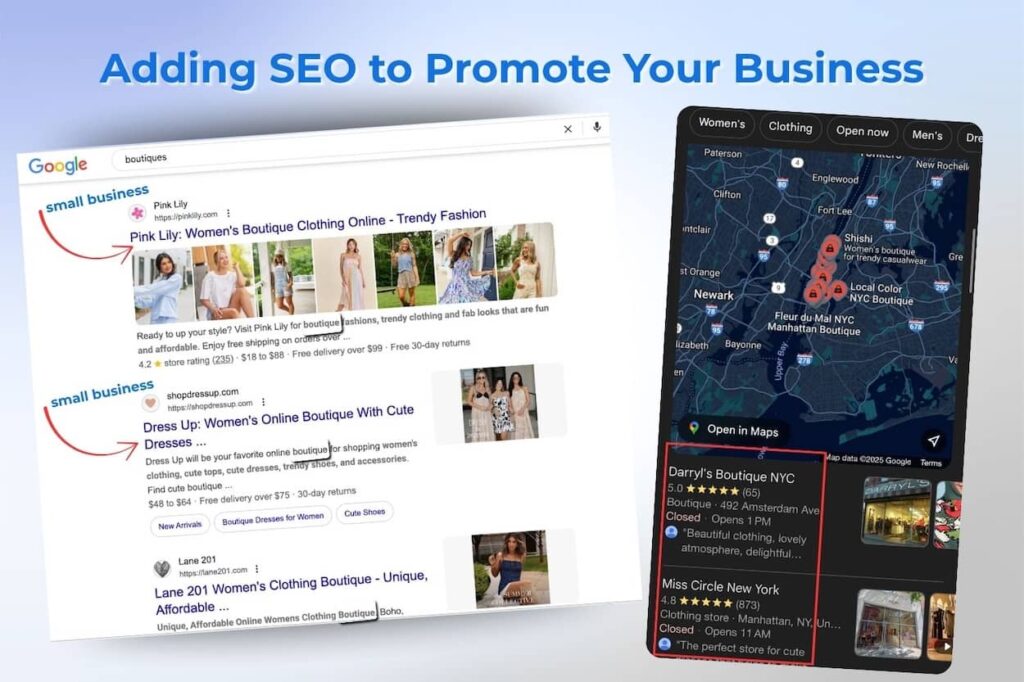
2) For Building Community & Awareness: Social Media Advertising
This is about meeting customers in their digital hangouts like where they relax, connect, and discover. A user on social media is in a different mindset than a user on Google. They are scrolling for entertainment, not actively searching for a solution. Understanding this mindset is key to knowing if social media is the right answer for where to advertise your business. Your ads need to be engaging and visual to grab their attention.
a) Meta (Facebook & Instagram)
- As a visual powerhouse, this is the place to tell your brand’s story with images, carousels, and video (like Stories and Reels). The targeting options are incredibly detailed, allowing you to reach very specific groups of people based on their interests, life events, and online behaviors. You can even use it for “retargeting” by showing ads to people who have already visited your website, reminding them of what you offer.
Best for: E-commerce stores, local services (restaurants, gyms, realtors), and any brand that can showcase its value visually.
b)LinkedIn
- This is the go-to network for professional connections. Here, you can target users by job title, industry, company size, and seniority. It’s highly effective, as LinkedIn is nearly 300% more effective at generating B2B leads than other social platforms.
Best for: B2B companies selling high-value services, generating leads for professional services, and establishing yourself as an industry expert.
c) Video Marketing (YouTube & TikTok)
- Video is the most engaging format online. YouTube is the world’s second-largest search engine, making it a prime spot for “how-to” videos, product demonstrations, and customer testimonials that answer user questions. TikTok is the king of short-form, attention-grabbing video, perfect for reaching younger audiences and showcasing your brand’s personality.
Best for: Demonstrating complex products, building a personal brand, and capturing attention with creative, engaging content.
d) Influencer Marketing
- This concept also applies in the world of home services. It’s not about celebrity endorsements. It’s about trusted local relationships. Just like micro-influencers, realtors have strong credibility within their networks. When a home service provider partners with a realtor, it creates a powerful trust signal. For example, a photo of a home inspector and a realtor together at a job site feels authentic. It shows collaboration, professionalism, and mutual trust.
- In this relationship, the realtor becomes a voice of endorsement. When they consistently recommend a home service provider to their clients, it builds confidence. The homeowner doesn’t just see a service. They see a trusted expert who was referred by someone they already rely on. That shared trust is what turns a simple referral into a lasting partnership.
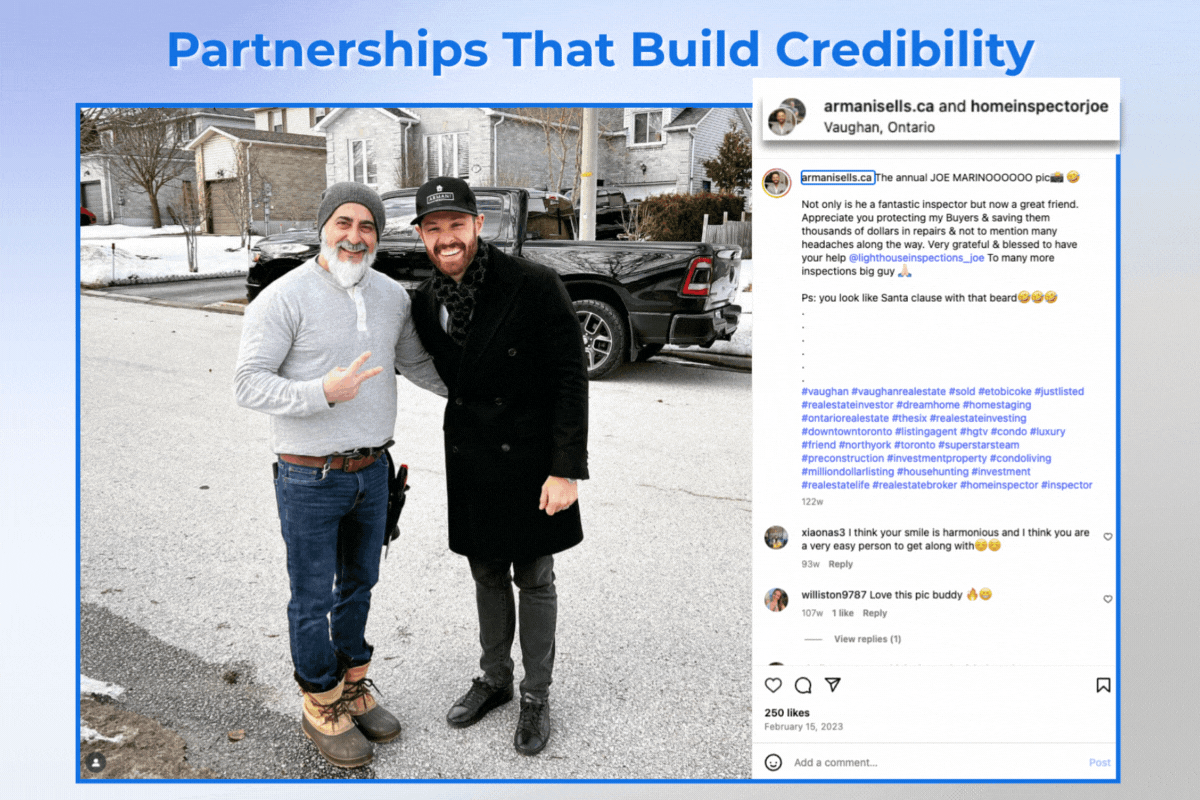
3) For Nurturing and Retention: Owning Your Audience
Your most valuable and cost-effective advertising channel is marketing to people who already know, like, and trust you. This is where you turn interested leads into loyal customers.
a) Email Marketing
- Email allows you to speak directly to your warmest leads and past customers. According to the Data & Marketing Association, email has an average ROI of over $40 for every $1 spent. To start, offer something valuable on your site (a discount, a free guide) in exchange for an email address. Then, you can nurture that relationship with helpful newsletters and exclusive offers.
Best for: Driving repeat business, sharing company news, promoting sales, and turning a one-time buyer into a lifelong fan.
b) Content Marketing (Your Blog)
- A blog is where you answer your customers’ biggest questions and become their go-to resource. A powerful strategy is to “repurpose” your content. One well-researched blog post can be turned into a script for a YouTube video, a series of tips for social media, and a summary for your email newsletter. This maximizes the value of your efforts and fuels all your other marketing channels.
Best for: Fueling your SEO efforts, demonstrating your expertise, and attracting your ideal customers organically over time.
4) For Hyper-Targeted Local Reach: Community-Level Advertising
For many businesses, the most important battle to win is in your own backyard. Google data confirms nearly half of all searches have local intent.
a) Google Business Profile (GBP)
- This is the single most important free advertising tool for any local business. To optimize it, you must:
- Completely fill out every section.
- Regularly upload new photos of your work, team, and location.
- Actively encourage and respond to customer reviews.
- Use the “Updates” and “Q&A” features to keep information fresh.
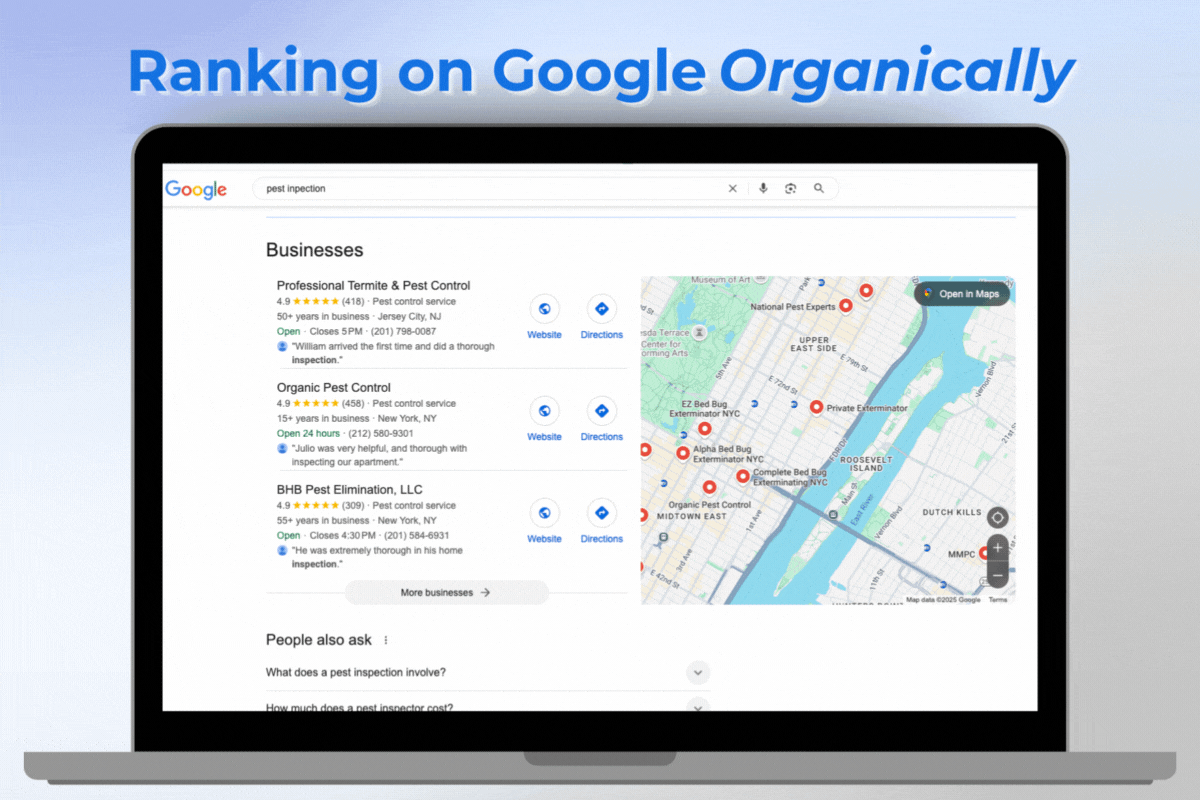
b) Online Directories
- Beyond Google, ensure your business is listed accurately on other key directories like Yelp, Angie’s List, and any that are specific to your industry. Consistency is crucial. Your Name, Address, and Phone number (NAP) must be identical across all listings to build trust with search engines.
5) For Dominating Your Local Market
For most businesses, the most important battle is won in your own backyard. These tactics build you into a local authority.
a) Optimize Your Online Listings
- Your Google Business Profile (GBP) is your digital storefront. To optimize it, you must:
- Completely fill out every single section.
- Regularly upload new, high-quality photos of your work, team, and location.
- Use the “Updates” and “Q&A” features to keep information fresh. Beyond Google, ensure your business is listed accurately on other key directories like Yelp, Angie’s List, and industry-specific sites. Your Name, Address, and Phone number (NAP) must be identical everywhere.
b) Actively Cultivate Online Reviews
- Reviews are the most powerful form of social proof. More positive reviews directly impact your search ranking and convince new customers to choose you.
- Make It Easy: Send customers a direct link to your review page via text or email after a successful job.
- Just Ask: Most happy customers are willing to leave a review if you simply ask.
- Respond to All Reviews: Thank positive reviewers and professionally address negative feedback. This shows you care and are actively engaged.
c) Join Online Communities and Conversations
- Where do local homeowners or business owners gather online? Find local Facebook Groups, Subreddits, or Nextdoor conversations related to your industry. The strategy is to be helpful, not salesy. A roofer who answers a question about storm damage in a local group builds far more trust than one who just posts ads.
d) Connect with Local Press and Media
- Don’t underestimate the power of traditional media. A feature in a local newspaper, blog, or news segment provides a massive credibility boost. You can get on their radar by sponsoring a charity event, positioning yourself as an expert they can quote for stories, or sharing a unique business story or milestone.
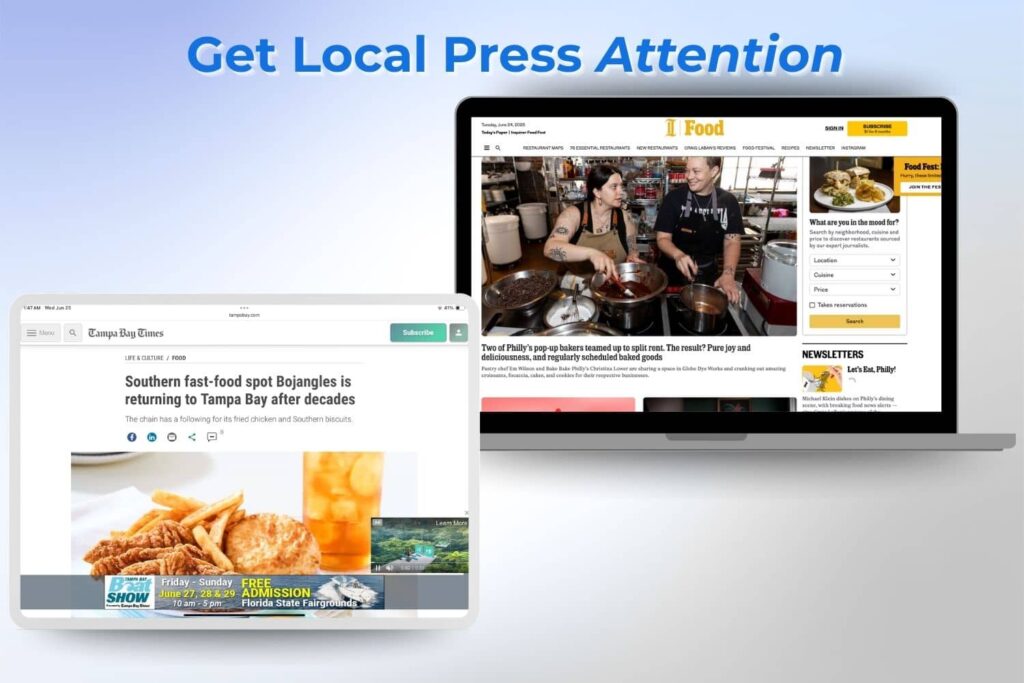
Conclusion
The answer to where to advertise your business isn’t some secret platform. It’s the place that perfectly aligns with your unique customers, your specific goals, and your budget. The secret isn’t the channel; it’s the strategy. With the framework you just read, you are now equipped to make smarter, more confident decisions about where to advertise your business and invest in your company’s growth.
Feeling clearer, but not sure where to start? That’s what we’re here for. We don’t just manage ads; we build growth strategies that deliver real ROI. Schedule a free, no-pressure strategy session today, and let’s map out the right path for your business.



